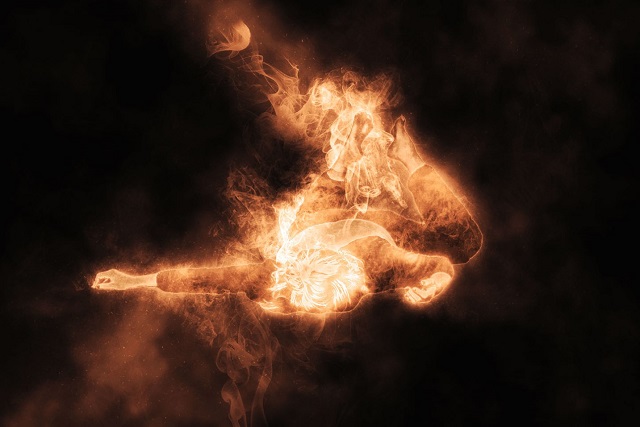If you love literature by eminent author Ngugi wa Thiong’o, there is some good news for you. Pan-African writers’ collective, Jalada Africa has published the short story, Ituĩka Rĩa Mũrũngarũ: Kana Kĩrĩa Gĩtũmaga Andũ Mathiĩ Marũngiĩ by Ngugi wa Thiong’o in over 30 African languages. This effectively makes it the single most translated short story in the history of African writing. The project that took four months pre-empts Jalada Africa’s September 2015 anthology, The Language Issue, which celebrates language through fiction, poetry, spoken word, visual art and essays, in 23 African languages. The publication also serves as Jalada Africa’s Translation Issue: Volume 1.
Following the publication, Ngugi wa Thiong’o had this to say “The moment we lost our languages was also the moment we lost our bodies, our gold, diamonds, copper, coffee and tea. The moment we accepted (or being made to accept) that we could not do things with our languages was the moment we accepted that we could not make things with our vast resources.”
Jalada Africa intends to periodically publish a new volume of The Translation Issue featuring one story of no more than 3000 words that’s been previously unpublished. Much like on Volume 1, writers and translators across the continent shall be invited to submit and edit translations in their African language of knowledge and/or study. The ultimate goal is to have each story translated into 2000 African languages. The story is available here.
This could not have happened at a better time than when we are trying to get our culture back as Africans. This is also a good opportunity for pupils and students to acquaint themselves with their own languages as schools teach the curriculum in English and Swahili, the two dominant languages. Such appreciation for our diverse cultures is also a step in the right direction towards celebrating our tribes as opposed to allowing them to create a rift between us. Who knows, we might have a school that teaches African languages just as we learn foreign languages like French and Spanish.
The original story plus the translations are available online on the Jalada Africa website – jalada.org/translation-issue
Excerpt from original story by Ngũgĩ wa Thiong’o – Ituĩka Rĩa Mũrũngarũ: Kana Kĩrĩa Gĩtũmaga Andũ Mathiĩ Marũngiĩ
Tene mũno andũ maathiyaga na moko na magũrũ. No ti gũkuruma. Aca. Hĩndĩ ĩyo andũ nĩ makĩrĩtie ngarĩ kana thungura ihenya. Ciĩga ciothe cia mwĩrĩ nĩ ciendaine mũno, na kũrutithania wĩra wega. No moko na magũrũ, nĩ ciendaine mũno, tondũ cieyonaga ta ciarĩ cia mahatha. Marũngo ma cio mahanaine mũno kĩmũmbĩre. Kĩande na kĩnena; kĩgokora na iru; thũng’wa na nyunĩro ya guoko; rũhĩ na ikinya; marũngo macio meyonaga marĩ a mũciaro ũmwe: guoko o guoko kwarĩ na ciara ithano na ndwara ithano, o ta cia magũrũ. O na mwarĩre wa ciara nĩ wahanaine: Nyagĩtungu mwena ũmwe na Nyakanini mwenainĩ ũyũ ũngĩ. Hĩndĩ ĩyo, nyagĩtungu gĩa guoko gĩtietindĩtie, kĩahanaine na gĩa kũgũrũ, gũkuhanĩrĩria na ciara iria ingĩ.
Excerpt from Kiswahili translation by Idza Luhumyo – Mapinduzi ya Kutembea Wima
Hapo zamani, binadamu alitembea kwa mikono na miguu kama wanyama wengine walio na miguu minne. Alikwenda kwa kasi hata kuliko sungura, chui na kifaru. Kati ya viungo vyote vya mwili wa binadamu, ni miguu na mikono iliyokuwa na ushirikiano wa karibu zaidi. Ushirikiano huu ulitokana na kule kuwa na viungo ambavyo vililingana na kuambatana. Bega liliambatana na nyonga. Kiwiko kikajibiwa na goti. Kifundo cha mkono nacho kikawa sawia na kisigino. Wayo wa mguu ukawa unalingana na kofi la mkono, na viungo hivi viwili, yaani mikono na miguu, vilikuwa vyote na vidole vitanotano, kisha vikaishia kwa kucha. Mikono na miguu ilikuwa na mpangilio sawile wa vidole vitanotano kutoka kwa kidole gumba mpaka kwa kile kidole kidogo cha kando. Siku hizo, kidole gumba kilikuwa karibu na vile vidole vingine sawa tu na kile kidole kikubwa cha mguu. Basi ikawa miguu na mikono inaitana binamu kwa sababu ya uhusiano huu wao wa karibu.
Excerpt from English translation by Ngũgĩ wa Thiong’o – The Upright Revolution: Or Why Humans Walk Upright
A long time ago humans used to walk on legs and arms, just like all the other four limbed creatures. Humans were faster than hare, leopard or rhino. Legs and arms were closer than any other organs: they had similar corresponding joints: shoulders and hips; elbows and knees; ankles and wrists; feet and hands, each ending with five toes and fingers, with nails on each toe and finger. Hands and feet had similar arrangements of their five toes and finger from the big toe and thumb to the smallest toes and pinkies. In those days the thumb was close to the other fingers, the same as the big toe. Legs and arms called each other first cousins.


